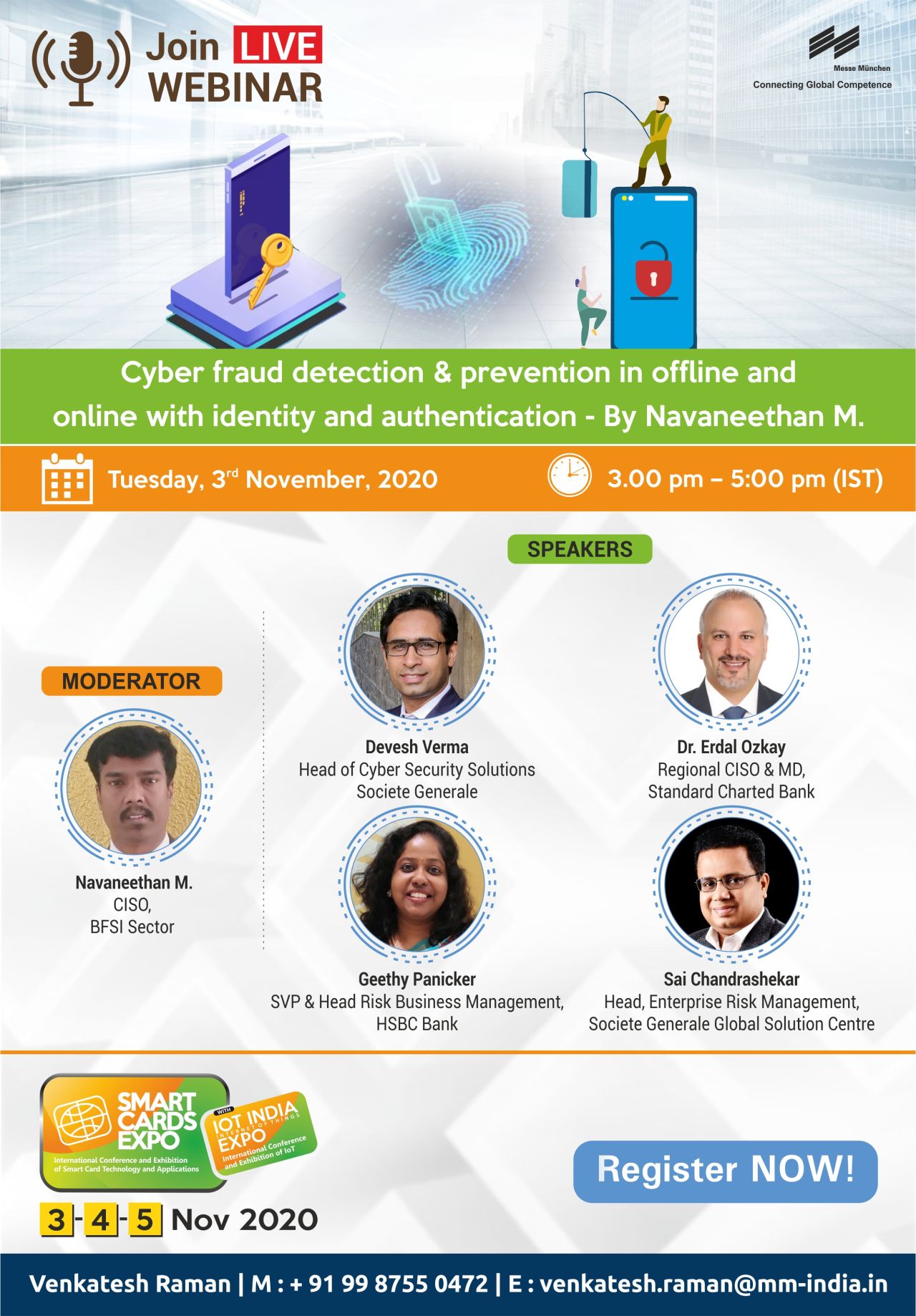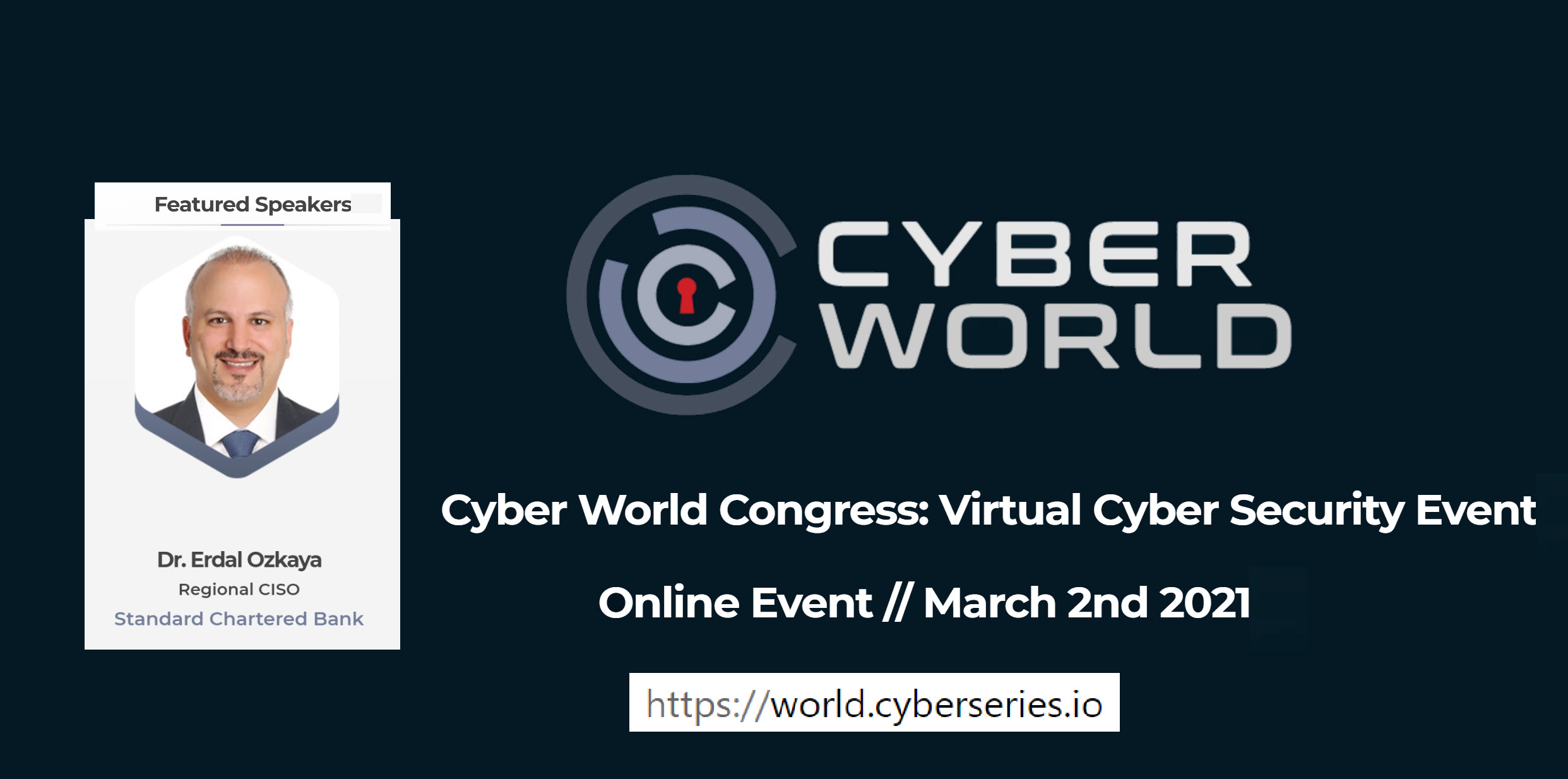
Cyber Fraud Detection and Prevention ; Free Webinar 5
Cyber Fraud Detection and Prevention in Offline & Online with Identity and Authentication
https://us02web.zoom.us/webinar/register/WN_3GByUaYpRkWWd9LFpC2ouw
Nov 3, 2020
9:30 London
1:30 PM Dubai
03:00 PM India
8:30 PM Sydney
For more evets :
https://www.erdalozkaya.com/category/free-events/

5 Steps to Detect & Prevent Cyber Fraud
Is your organization prepared to detect & prevent cyber fraud?
From the moment that information became digitized, there have been people trying to manipulate data for personal and financial gain. As technology, device proliferation, and always-on connectivity revolutionized the way all industries conduct business, cybercriminals more than kept pace. For a long time, traditional methods of cybersecurity – firewalls, intrusion detection and prevention, and antivirus software, primarily – were enough to provide effective protection. However, those days are long gone. Sophisticated attack and fraud methods are designed to bypass traditional security layers.
Even though it seems a new data breach is announced daily, many organizations are still unsure about how to protect themselves against attack. With threats originating from inside organizations as well as outside and fraud tactics becoming more sophisticated by the moment, it’s no wonder many companies find their risk management strategies inadequate.
Is your organization prepared for the seemingly inevitable cyber-attack?
Here are 5 key strategies to a successfully detecting and proactively preventing cyber fraud at your organization:
- Use In-Depth Dynamic Defenses
Traditional security layers are all critical. A comprehensive cyber security program includes tools such as firewalls, intrusion detection and prevention, multi-factor authentication, data loss prevention (DLP) software, and security information and event management (SIEM) software.Newer technologies allow organizations to cover all entry and application interaction points, including monitoring real-time user behavior and work across multiple platforms. Customers, employees, vendors, and consultants are using a variety of technologies and devices to access information, and they are doing so from all points on the globe and at all hours of the day. Defenses need to be able to handle every possible scenario and platform, and your security system should be able to detect potential fraud across all layers. - Leverage User Behavior Monitoring and Analytics
Traditional security layers don’t tell you much about the users who are accessing your systems. The more you know about the users and their patterns of behavior, the faster you can create a profile of the users’ habits, allowing you to more quickly detect an anomaly and thwart a potential threat.User behavior monitoring and focused analytic solutions make it easier for organizations to achieve a real-time detection and prevention posture. - Recognize and Address Insider Threats
Most security measures focus on keeping outsiders from getting into the network. However, one study that tracked data breaches and security incidents over 10 years found that 19% resulted from insider misuse and 27% from miscellaneous errors.The challenge for security systems is recognizing the difference between ordinary employee behaviors versus malicious behavior. Identifying these manipulations requires a system with a wide range of fraud scenarios, intelligence, advanced analytic capabilities, forensics, and high flexibility to detect anomalies within seemingly regular behavior patterns. - Embrace Data Visualization to Speed Investigations
Even the best security system is plagued with false positives and an overwhelming number of alerts. Investigating every alarm can be time consuming, expensive, and ineffective. Adding to the problem is the relative inability to analyze the data across multiple channels and over time, and understand how it fits with past alerts.Tools that embrace data visualization and incorporate link analysis can speed up your investigations and provide an audit trail of the relationship between user or employee behavior and accessed information. - Educate Employees and Vendors on Security Measures
Even with data breaches and security topics in the news on a weekly basis, education remains a core issue. According to a recent global survey conducted by PwC, only 51% of respondents say their company has an employee awareness and training program related to security, down from 60% in the prior year.Not every act of cyber fraud is malicious. All it takes is one of your employees to open a malware-filled attachment for an entire network to be compromised. The sad reality is the vast majority of users are woefully under educated about cyber fraud and security best practices. An excellent first step in combating payment fraud is good security education that includes regular hands-on training, frequent reminders on how to detect fraudulent activity and tips for better security hygiene. The more employees and third-party vendors with access to your network know about practicing good security, the better they will be at preventing potential cyber fraud.
As threats become harder to detect and the costs of cyber fraud continue to skyrocket, instituting more advanced and effective security systems isn’t a luxury; it is a necessity. Traditional security tools provide the foundation for a good fraud detection and prevention system. But adding the next line of defense and shifting from transaction monitoring to true user behavior monitoring with analytics, forensics, and data visualization, could be the difference between detecting fraud before it does damage or becoming another cyber fraud statistic.
Is your organization prepared or will it be the next victim?





